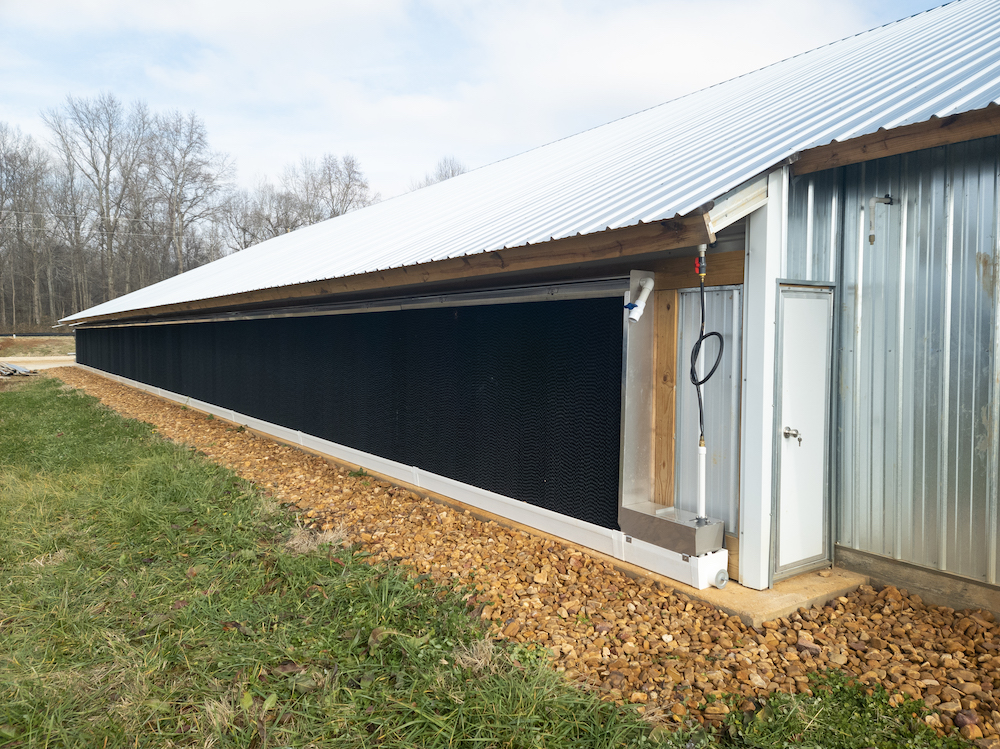
Poultry house equipment checkup
By Randy Myers
Features Barn ManagementMaintaining an efficient poultry operation is key to promoting bird health and productivity, and that requires proper maintenance of production equipment.
 Over time, cool cell pads can develop calcium and other buildups that can reduce their effectiveness.
Over time, cool cell pads can develop calcium and other buildups that can reduce their effectiveness. Maintaining an efficient poultry operation is key to promoting bird health and productivity, and that requires proper maintenance of production equipment.
“That doesn’t mean starting from scratch,” says Mark Cook, Cumberland district manager. “Rather, it’s giving your system regular checks for efficiency and deciding to repair, replace or upgrade poultry equipment that can save you on time, labor and energy.”
He recommends examining four poultry house components for possible efficiency upgrades.
Cool Cells
A clean cool cell pad is an efficient pad. Over time, cool cell pads can develop calcium and other buildups that can reduce their effectiveness. “There are products available on the market that can help you clean your cool cell pads, but a good cleaning, using manufacturer-approved products and methods, can make a significant difference,” Cook says.
While cleaning cool cell pads, he also recommends taking a moment to clean out the filter pumps. “Clogged cool cell filters have reduced water flow, decreasing their ability to reduce the temperature in the chicken houses.”
Cook adds there is a quick visual test to determine if a cool cell upgrade is needed. If a cool cell is flat and straight, it’s in good working condition. However, if it looks like it’s being pulled into the house, it needs to be replaced.
Fans, Belts and Pulleys
A fan that’s damaged or rusting through can’t do its best work. Cook recommends checking wind speed to ensure it’s up to integrator specs. If fans aren’t meeting those recommendations, it may be time to replace or add fans to the system.
He notes that the small size of fan system belts and pulleys makes them easy to overlook. “A worn belt reduces the amount of friction between the belt and the pulley, meaning more slippage and a less efficient fan. Also, make sure pulleys are in good working condition and greased. A stuck pulley cannot do its job well.”
Cook adds that a pulley and belt are made to fit each other. If a belt is sunk into the pulley, it is worn out.
Shutters and Sidewalls
Shutters and sidewalls work with fans to keep poultry houses at the ideal temperature. Cook says that dirty shutters are efficiency robbers and should be kept clean and in optimum condition. “It doesn’t take much for the components of a poultry barn to get dirty, so consider cleaning your shutters between flocks. If they can’t come clean or appear damaged, it may be time for a replacement.”
If using tunnel ventilation, he suggests ensuring that sidewalls are tightly sealed and closed, as any cracks in the system can let hot air in. “Cracks in your sidewall can cause unwanted increases in air temperature throughout the house. If you’re noticing this issue, it may be time to replace your sidewall vents.”
Controller
Having the right controller on barns can make a big difference in keeping systems running at the top of their game. “A smart barn controller puts control in the palm of your hand, allowing you to monitor and adjust your systems at the click of a button,” Cook says.
Print this page